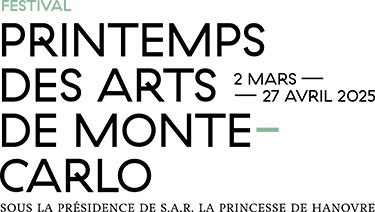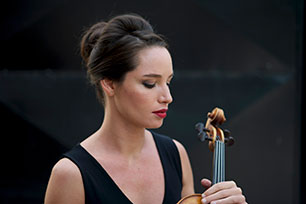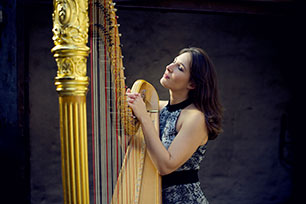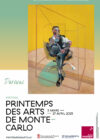We all know about the polysemy of the word “play” when it comes to music. True, playing can be a playful activity, but it also requires serious know-how from the performer – particularly as the rules vary throughout history. They plunge their roots in various aesthetic conventions, come to life in scores, and bloom under the fingers of the performer… Tonight, the rules of the game come from a singular vision – that of composer György Kurtág. Since the 1970s, his catalogue has filled with játékok (“games” in Hungarian). The performers may freely order these miniature pieces, associate them to other works or alter their instrumentation in view of multiplying the intertextual echoes of the programme. Some connections appear: a shepherd’s flute announces the panpipe of God Pan, the chirping of birds answers the elephant’s lullaby, arabesques proliferate in a perpetuum mobile… So, place your bets, and let the game begin!
The term “microlude” which suggests a miniature game, has been used to describe Kurtág’s játékok. Although anachronistic, it ideally applies to the six pieces for the piano in Claude Debussy’s Children’s Corner. Indeed, they feature the reduced proportions, concentration of the material and recurring playfulness in Kurtág’s short pieces. In July 1908, Debussy dedicated it to his “dear little Chouchou, with the tender apologies of his father for what follows.” Children’s Corner resembles a book of children’s reveries, a picture book featuring a clumsy elephant, a naive doll, or the clowns Footit and Chocolat. Being accessible without being simplistic, childlike without being immature, the cycle is as attractive to pianists in the making as to accomplished virtuosos. Its success was such that several transcriptions were made from it: Carlos Salzedo took up the Debussy trio of the Sonata for flute, alto and harp.
Debussy’s body of work abounds with short pieces, sometimes as abstract as the delicate Arabesque n°1 (1890-91, here transposed from the piano to the harp), and often rich in imagery as in the case of Syrinx. It took Debussy over three years to deliver this last composition although it was only three-minute long and written for the sole flute. As early as in 1909, writer Gabriel Mourey commissioned the music for his dramatic play Psyché from Debussy. The musician kept pushing off the deadline and finally gave up on the project. The only surviving excerpt, Syrinx, became a major work in the flute repertoire – and for good reason as the lament of Pan mourning his nymph turned into a reed to escape from an undesirable suitor is a piece of surprising modernity. The melodies adorned with chromatisms unfold in sensual curses while Pan’s improvisation is sculpted with sigh-like breathing spaces.
A century later, Kurtág seems to be recalling Syrinx in some of his pieces for flute solo. “…preparation, experiments for the creation of a perpetuum mobile…” drawn from his op. 39 (1997) thus takes the form of a (false) improvisation, interspersed with theatrical onomatopoeic comments by the player. The aesthetics of deploration permeates the “Doloroso” (1992) or “…ein Brief aus der Ferne an Ursula…” written in 2014 following the death of harpist Ursula Hollinger. These condensed pieces are drawn from the cycle in progress of Jelek, játékok és üzenetek (Signs, Games and Messages) for several instruments started in the 1980s. It includes many portraits, Kurtág drawing his inspiration from everyday life events or encounters. He sometimes also refers to musicians from the past, such as in his “Hommage to J.S.B. ”, in which he revisits a practice dear to Bach of suggesting polyphony through the articulation of monodic lines.
In his Flute sonata in E-flat major, BWV 1031 (1734), adapted here for flute and harp, Johann Sebastian Bach doesn’t have recourse to the tricks of a latent polyphony. It is actually all in counterpoint, the two lines of the original harpsichord easily weaving together with the line of flute. The latter, proud and cheerful in its swift motions, takes on a tinge of soft wistfulness in the poetic “Siciliano”.
Nostalgia also pervades the opening of the Sonata for flute, alto and harp by Debussy. This feeling dissipates rapidly though, to give way to an array of evanescent themes. Each haloed with radiant light, they assert their brightness against the days of war. Because Debussy created this sonata in the autumn of 1915. In response to the conflict that is tearing Europe apart, he asserts his national identity while reconnecting with the baroque genre of the trio sonata – rooting his piece in the old days both through its form and the archaism of its themes. One last connection can be drawn: just as Kurtág pays tribute to Bach, the memory of the 18th century impulses an ever more modern aesthetics in Debussy. Rooted in the past but turned towards the future, the musical game keeps growing branches.
Louise Boisselier





